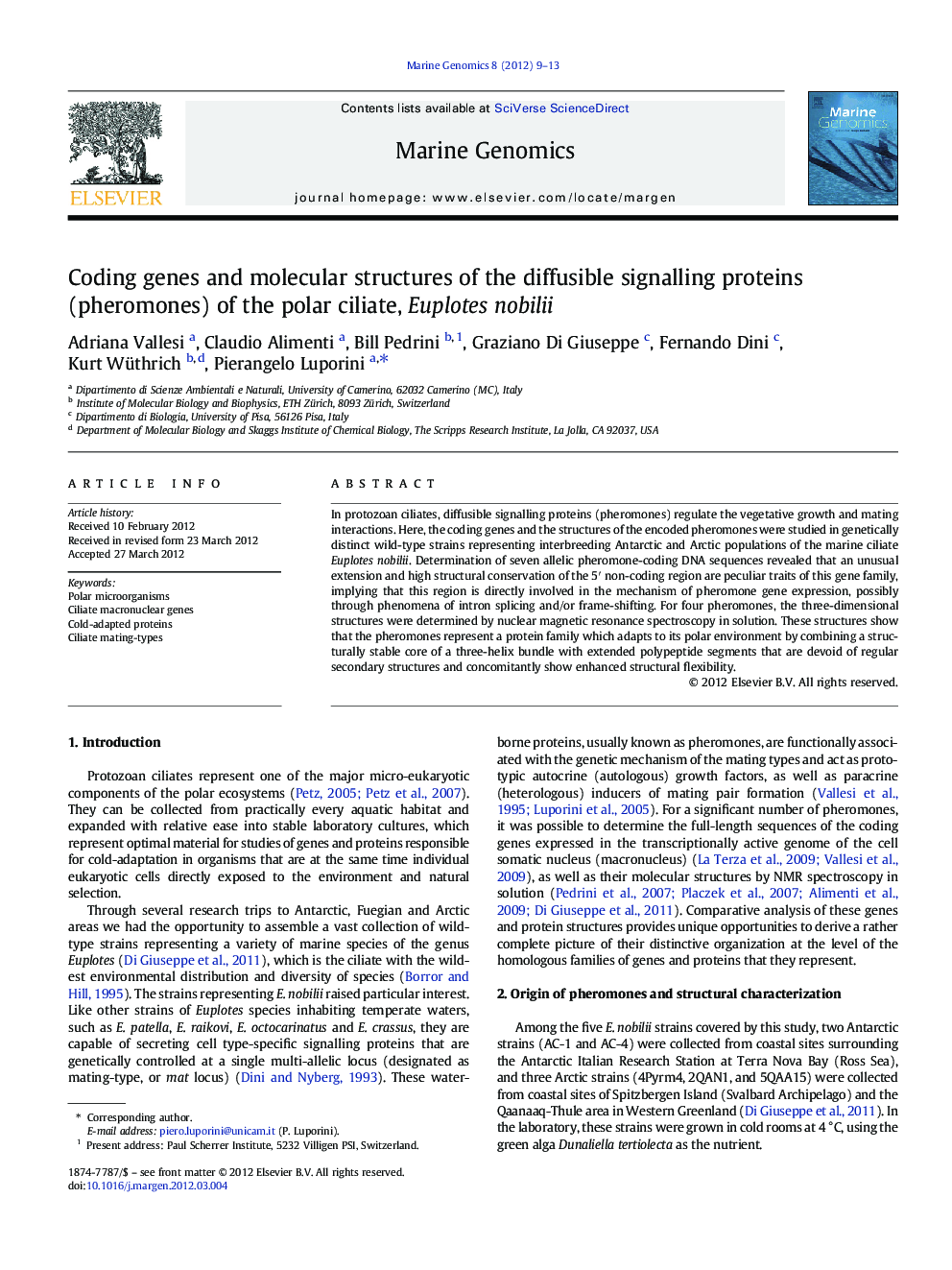| Article ID | Journal | Published Year | Pages | File Type |
|---|---|---|---|---|
| 2058277 | Marine Genomics | 2012 | 5 Pages |
Abstract
In protozoan ciliates, diffusible signalling proteins (pheromones) regulate the vegetative growth and mating interactions. Here, the coding genes and the structures of the encoded pheromones were studied in genetically distinct wild-type strains representing interbreeding Antarctic and Arctic populations of the marine ciliate Euplotes nobilii. Determination of seven allelic pheromone-coding DNA sequences revealed that an unusual extension and high structural conservation of the 5â² non-coding region are peculiar traits of this gene family, implying that this region is directly involved in the mechanism of pheromone gene expression, possibly through phenomena of intron splicing and/or frame-shifting. For four pheromones, the three-dimensional structures were determined by nuclear magnetic resonance spectroscopy in solution. These structures show that the pheromones represent a protein family which adapts to its polar environment by combining a structurally stable core of a three-helix bundle with extended polypeptide segments that are devoid of regular secondary structures and concomitantly show enhanced structural flexibility.
Related Topics
Physical Sciences and Engineering
Earth and Planetary Sciences
Earth and Planetary Sciences (General)
Authors
Adriana Vallesi, Claudio Alimenti, Bill Pedrini, Graziano Di Giuseppe, Fernando Dini, Kurt Wüthrich, Pierangelo Luporini,
